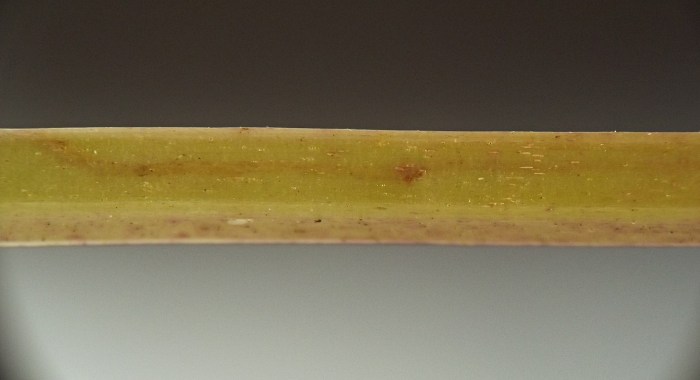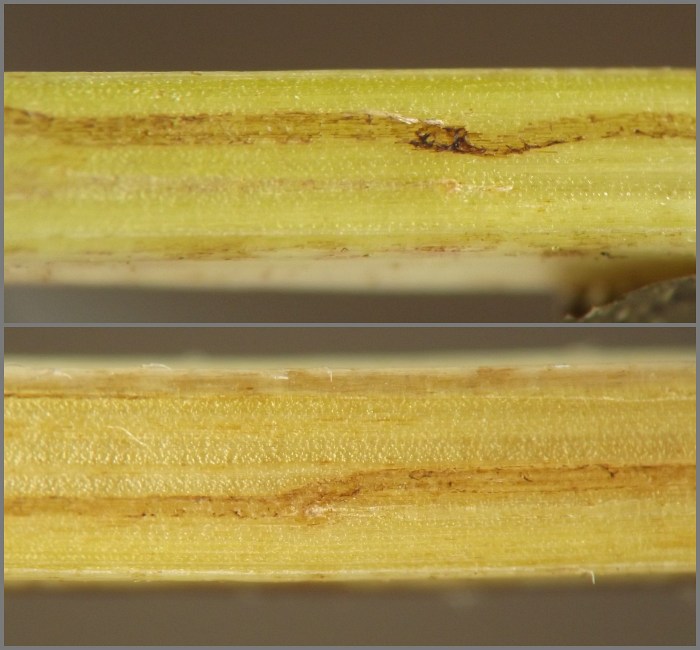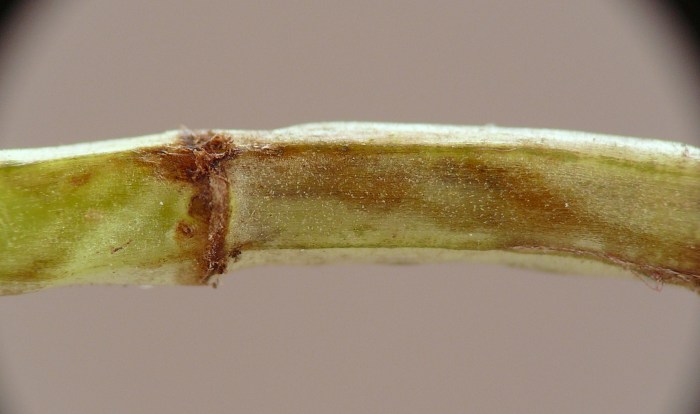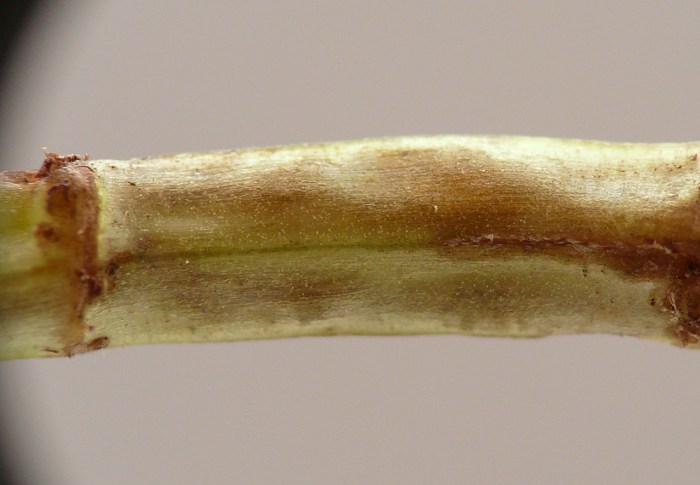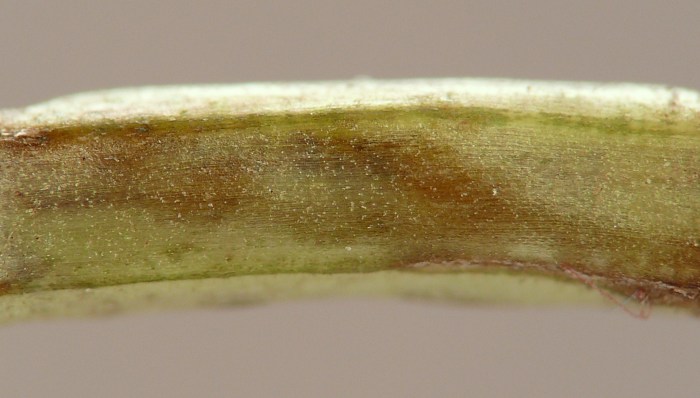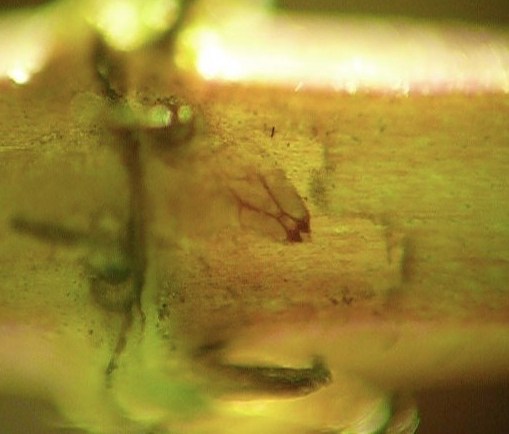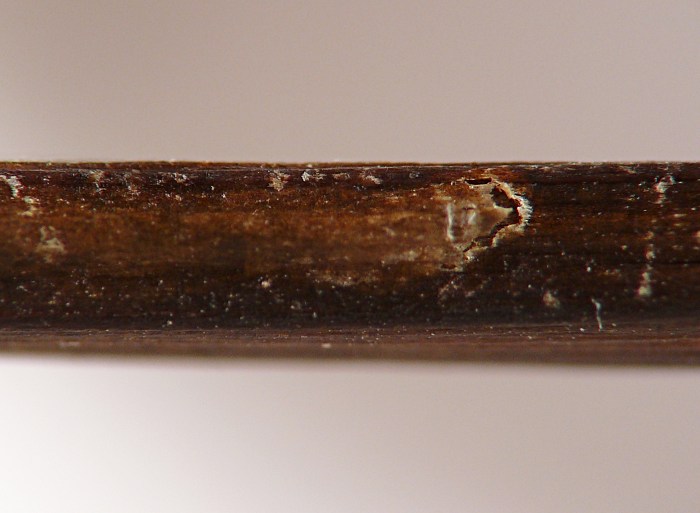Stem miner/borer (Lepidoptera: Opostegidae) in Mentha [0639]
| Order | Lepidoptera |
|---|---|
| Family | Opostegidae[T] |
| Lower taxon | cf. Pseudopostega |
| No. spp. involved | One confirmed |
| Feeding mode | Miner/borer in stem and evidently also in rhizome |
| Host plant | Mentha sp. (Lamiaceae) |
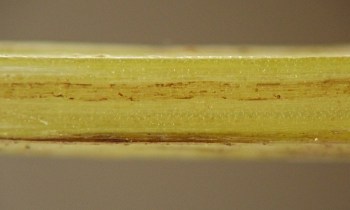
Externally visible linear mines were found in several stems of the hostplant in a wetland in October 2023. The mines traversed the lengths of multiple internodes, crossing the nodes to get from one internode to the next. Often, most of the length of a mine in a given internode showed little or no solid frass accumulation (but some smudgy areas suggesting solidified liquid frass); then, as the mine neared an adjacent node, there would be a sudden deposition of a small to moderate amount of frass in a 1-3mm section of the mine. As with similar mining formed by an opostegid during summer and fall on aerial stems of Monarda fistulosa (record #0339), these mines seemed too narrow to have been created by mature larvae, and all observed examples led down to ground level, where they disappeared into the belowground parts of the plant.
On 26 May 2024, a spring shoot of the hostplant at the same site was found to contain a slightly swollen and discolored area in the base of the stem. The appearance and timing of the damage was essentially identical to damage accomplished by nearly mature opostegid larvae in other hostplants in the study area. By 1 June the opostegid larva in this stem had left the interior of the swollen and discolored area and mined upward, forming a short, shallow, subepidermal linear mine. In contrast to the narrowness of the mines formed by young larvae in mature stems of the host in the summer or fall, this brief terminal mine was relatively wide, reflecting the large size of the larva. By 3pm the next day, the larva had finished its feeding in this short mine and was lying motionless in the mine right behind the rounded terminus of the mine, with what appeared to be a partial exit slit cut in the stem epidermis. By 6pm the same day, the larva had exited the stem and was spinning its cocoon in the tissue paper at the bottom of the rearing container. Upon evacuating the stem, the larva left behind a ragged, semicircular exit slit at the endpoint of the mine.
The disappearance of the narrow, late-season stem mines into the belowground parts of the host, coupled with the finding of an older larva in a shoot of new growth relatively early in the growing season, strongly suggests that this insect at least sometimes overwinters as a middle-instar larva in the belowground parts of the host, then migrates into the base of the new shoots in spring, where it finishes feeding. Similar behavior is documented for opostegids in other hostplants in the current study (see records #0339 and #0097).
With regard to the narrow, late-season mines, the Mentha stems bearing these mines were found within only a few meters of Lycopus plants that showed similar stem mining. Interestingly, however, the frass patterns in the mines on these two hosts seemed to differ: there was little solid frass accumulation and no central frass line observed in the Mentha stem mines, whereas the Lycopus stem mines mostly showed a central squiggly line of solid frass (similar to opostegid mines in aerial stems of Monarda fistulosa). These differences could perhaps be explained as the work of a single species whose physiology of feeding is different between the two hosts. Another possible explanation is that two different opostegid species could be involved. According to van Nieukerken (1989), Mentha is a suspected host for Pseudopostega crepusculella in Europe, whereas Lycopus europaeus is a confirmed host for a different opostegid species, P. auritella.
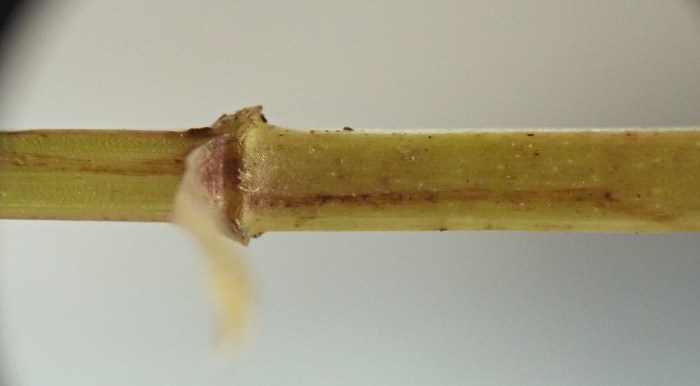

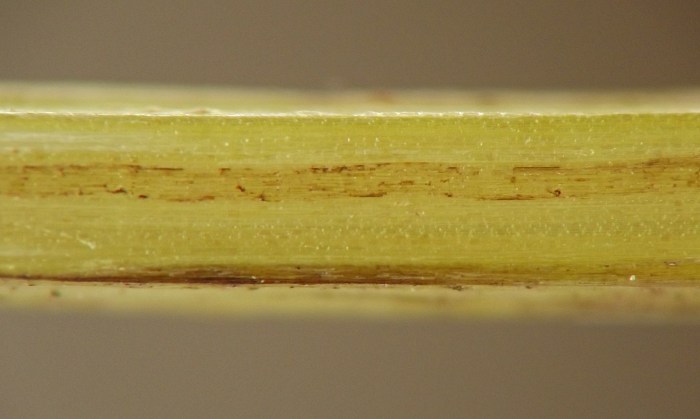
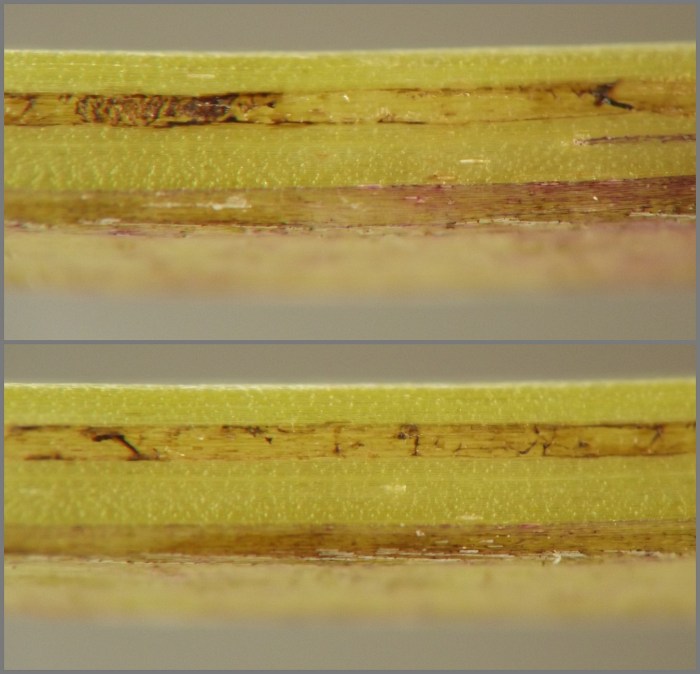
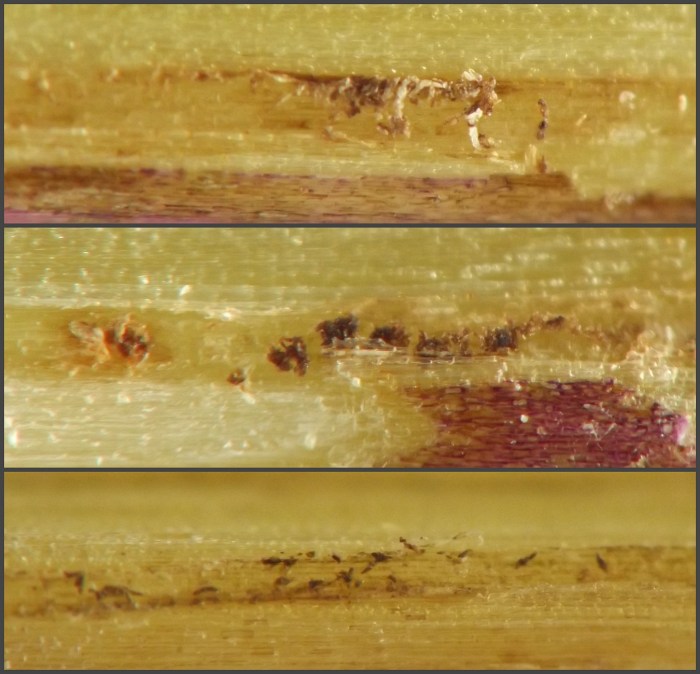
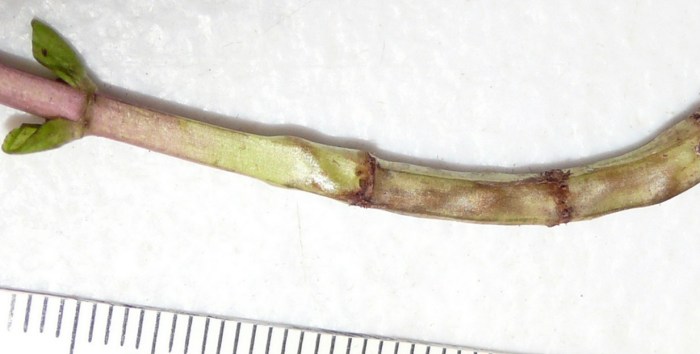
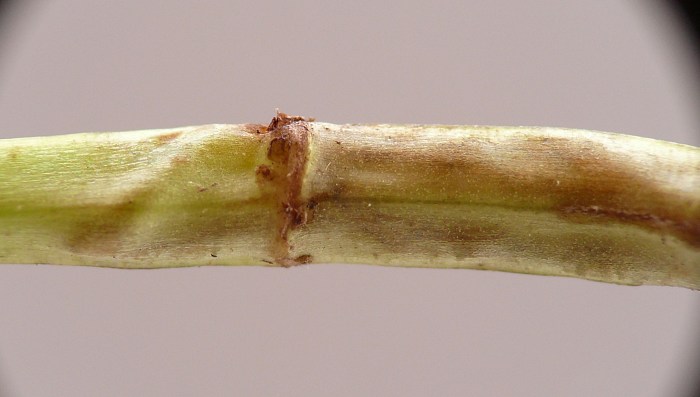
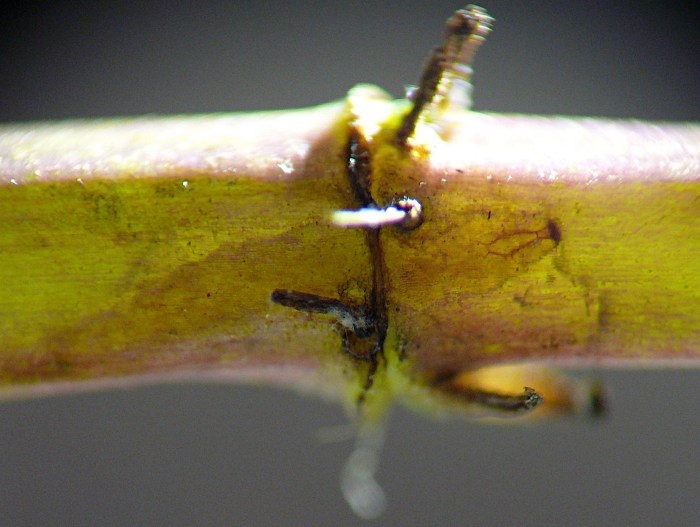
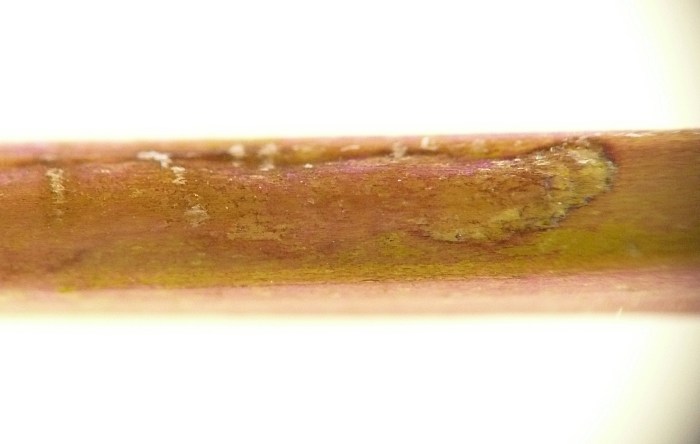
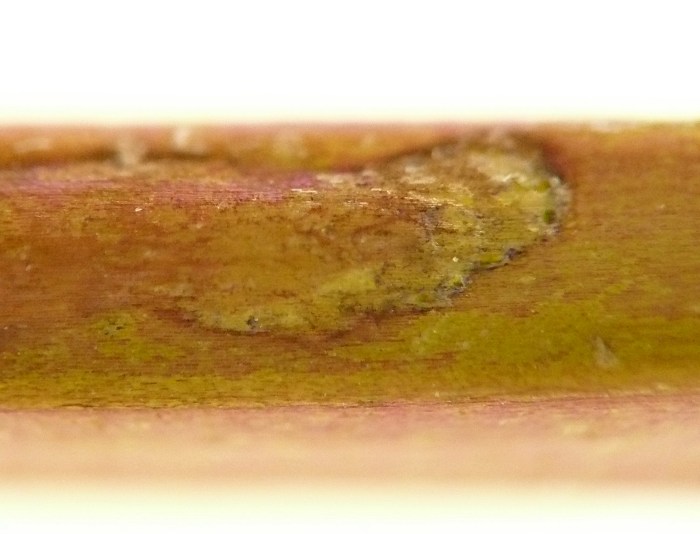
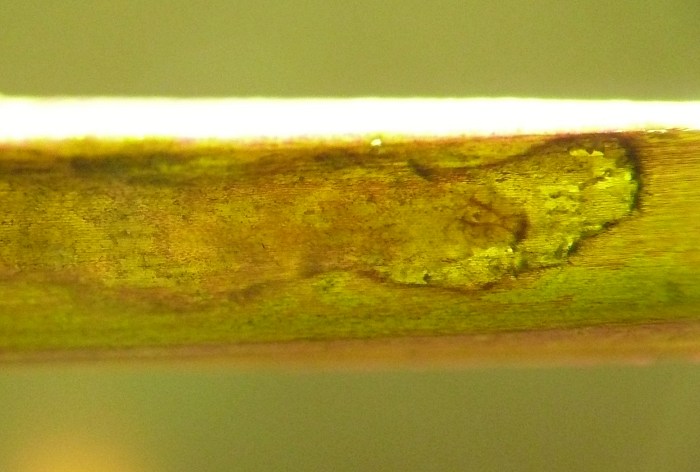
Specimen data for images
Coll. 10/20/23, photos taken 10/20/23-10/21/23 (01-07); coll. 05/26/24, photos taken 05/26/24-05/27/24 (08-12), 06/01/24 (13-15), 06/02/24 (16-18), 06/06/24-06/09/24 (19-20), and 07/03/24 (21).
All specimens above from the Upper Midwest, USA.
References
Nieukerken, E.J. van. 1989. Opostegidae. Pages 357-372 in Johansson, R., et al. The Nepticulidae and Opostegidae (Lepidoptera) of North West Europe. Fauna entomologica scandinavica 23:1-739.
Page created 05/27/24. Last update: 07/06/24
